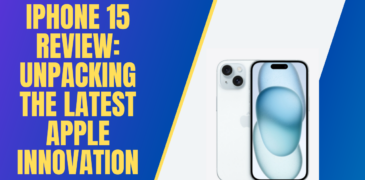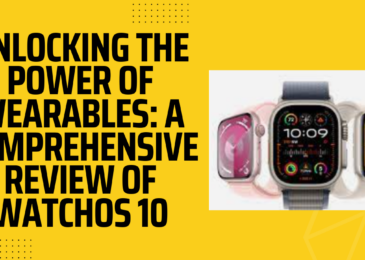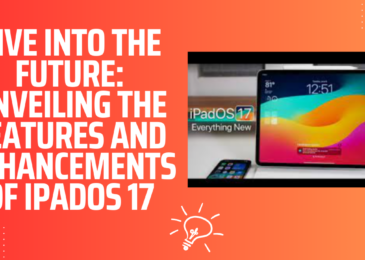The iPhone 15 continues Apple’s tradition of gradual refinement, with no groundbreaking changes expected at this stage. It takes a few steps forward compared to its predecessor, the iPhone 14, while maintaining the familiar formula. Notably, the standard iPhone now includes the Dynamic Island feature previously exclusive to the Pro models. The display has received a significant upgrade, offering improved maximum brightness for a more vibrant viewing experience. Additionally, the introduction of a 48MP primary camera brings the vanilla iPhone closer to the Pro variants, delivering a default 24MP photo resolution, advanced portrait capabilities, and impressive 4K@60fps HDR video recording. These enhancements mark the iPhone 15 as an evolutionary step within the product line.
Diverse Network Connectivity Options
The iPhone 15 offers a range of network connectivity options depending on your region. These options include:
- International Version: This version features a single Nano-SIM card slot and supports eSIM for a second phone number.
- United States: Users in the US enjoy dual eSIM support with the capability to have multiple numbers.
- China: In China, the iPhone 15 is equipped with dual Nano-SIM slots.
- Consistent Connectivity: Regardless of the region, the iPhone 15 provides dual standby functionality and supports both SA (Standalone) and NSA (Non-Standalone) Sub6 connectivity. Some models also feature mmWave support.
Satellite Connectivity and Services
In specific countries, Apple introduces satellite connectivity and services for the iPhone 15. These services include:
- Satellite Emergency Pings: The iPhone 15 offers the ability to send emergency pings via satellite when you’re outside of cellular coverage.
- Roadside Assistance via Satellite: This feature is available but typically requires a subscription after an initial two-year grace period.
- Find My via Satellite: You can use Find My via satellite to update your location when outside of cellular coverage, ensuring that your loved ones can keep track of your safety.
- Regional Limitations: It’s important to note that features like Emergency SOS and Find My via satellite may have some regional limitations.
Enhanced Voice Calls and Voice Isolation
Apple promises clearer voice calls in the iPhone 15. Notable features in this regard include:
- Voice Isolation Toggle: The iPhone 15 introduces a Voice Isolation toggle that users can manually enable during calls when dealing with noisy backgrounds.
- Effective Noise Reduction: While the reasons for not enabling this feature automatically are unclear, it has proven to be effective in drowning out background noise in our testing.
Immersive HDR Experience
The iPhone 15 offers a seamless HDR experience with support for both HDR10 and Dolby Vision. Unlike some devices that require users to navigate hardware decoders and DRM certification, the iPhone 15 simplifies the process. It effortlessly handles HDR content, making it hassle-free for users. Streaming services like Netflix will reliably deliver compatible HDR content at the display’s full resolution. Apple’s HDR implementation is also more flexible, allowing a portion of the screen to operate in HDR mode, ideal for scenarios like watching a windowed video.
60Hz Refresh Rate Limitation
One notable downside with the iPhone 15’s display is the continued use of a 60Hz refresh rate. Many Android devices in the same price range have moved beyond this basic refresh rate. For high refresh rates on an iPhone, one must still opt for the Pro models. It’s a missed opportunity, as a higher refresh rate significantly enhances the perceived fluidity and speed of the user interface.
On a more positive note, the iPhone 15 boasts impressive pixel response times, ensuring a fast and smooth experience even with fine text in motion, without any smearing or halos.
Battery Life
The iPhone 15 is equipped with a 3349 mAh battery, slightly larger than the previous year’s iPhone 14 Pro with its 3200 mAh and the vanilla iPhone 14 with its 3279 mAh. Apple has evidently invested in additional optimization efforts, both in software and hardware, to improve battery life since the previous model.
Apple’s iOS 17
The iPhone 15 ships with Apple’s latest iOS 17 pre-installed. While Apple may tout it as an upgrade, iOS 17 appears to be one of the more modest updates in the platform’s history. Nevertheless, it introduces several noteworthy features, including:
- Standby Mode: A new Standby mode for improved power management.
- Customizable Contact Posters: Enhanced customization options for contact posters.
- Password Sharing with Friends: Simplified password sharing functionality.
- Offline Maps in Maps: The ability to use maps offline for navigation.
- Updated Messages: An updated Messages app with automatic SMS code deletion.
- Interactive Widgets: More interactive and dynamic widgets.
Taking a closer look at iOS 17 on the iPhone 15, it closely mirrors the experience on the Pro models, but with a few distinctions. Notably, the Pro models replace the traditional alert slider with a new Action key, resulting in a revised customization interface.
The overall interface remains familiar, centered around home screens filled with apps and widgets, an App Library for organizing less frequently used apps, and the Notification and Control Centers. Despite the modest nature of the update, iOS 17 continues to offer a stable and user-friendly experience.
Introducing the 48MP Main Camera
While the iPhone 15 and 15 Plus maintain the same camera count as their predecessors, with two rear cameras and one front-facing camera, there’s a significant upgrade in the form of a brand-new 48MP main camera. This primary camera boasts a 26mm focal length and a wide f/1.6 aperture.
Apple typically doesn’t disclose extensive details about its camera hardware, but we’ve gathered that the 48MP camera in the standard iPhone 15 and the Plus models features a different Sony sensor compared to the one found in the Pro models, likely a custom-ordered Sony sensor with a stacked design. This design enhances readout speeds and low-light performance.
Camera App and Features
The camera app’s viewfinder has remained largely unchanged since iOS 16. It offers a precise calibration of the three cameras, allowing users to preview what lies beyond the frame in real-time.
Apple’s image processing includes a range of features such as Smart HDR, Night Mode, Deep Fusion, and the Photonic Engine introduced in the previous year, ensuring enhanced photography capabilities.
Conclusion
In conclusion, the iPhone 15 presents a series of notable upgrades and refinements while retaining the core Apple experience. The introduction of a 48MP main camera, improved display quality with HDR support, and enhanced iOS 17 features contribute to a compelling smartphone package. However, the absence of a higher refresh rate display is a notable drawback in comparison to some competitors. The device continues to excel in terms of image processing and camera capabilities, providing users with versatile photography options. Overall, the iPhone 15 maintains Apple’s commitment to delivering a premium and user-friendly smartphone, even if it doesn’t represent a groundbreaking departure from its predecessor.
Read more:







